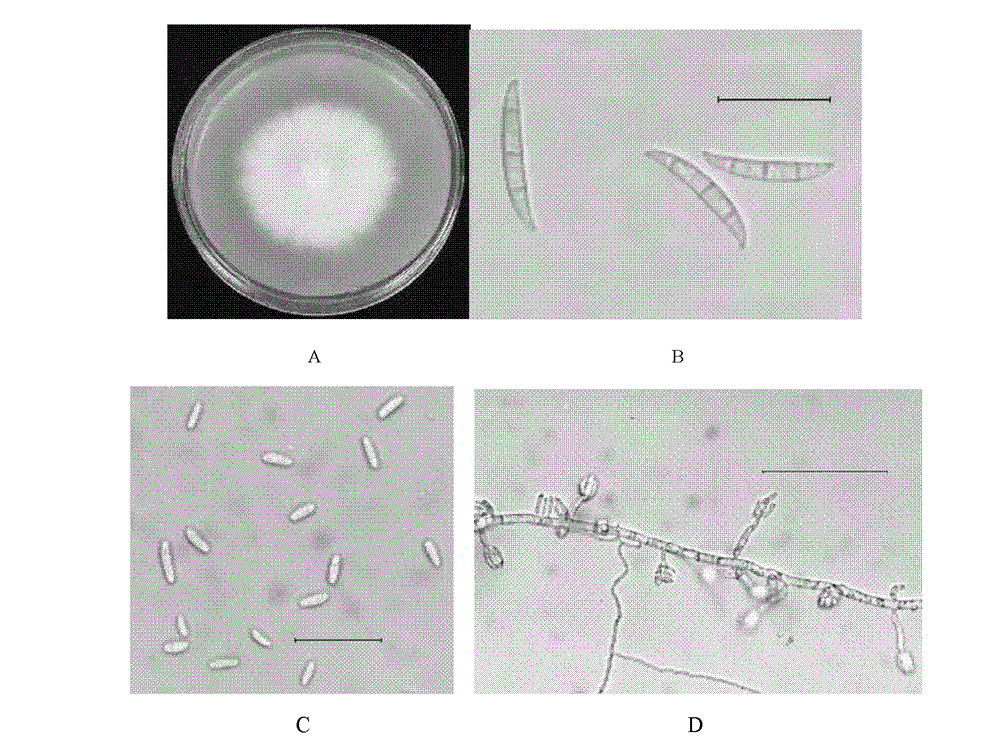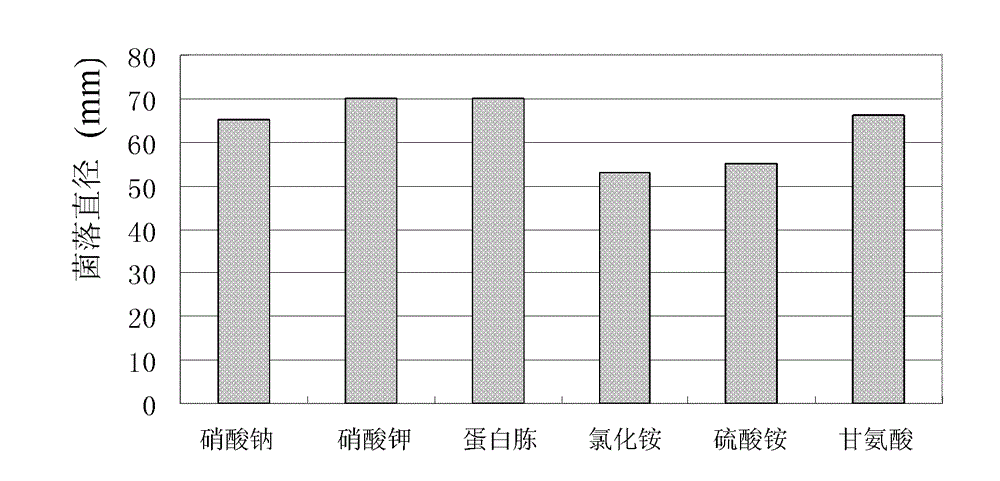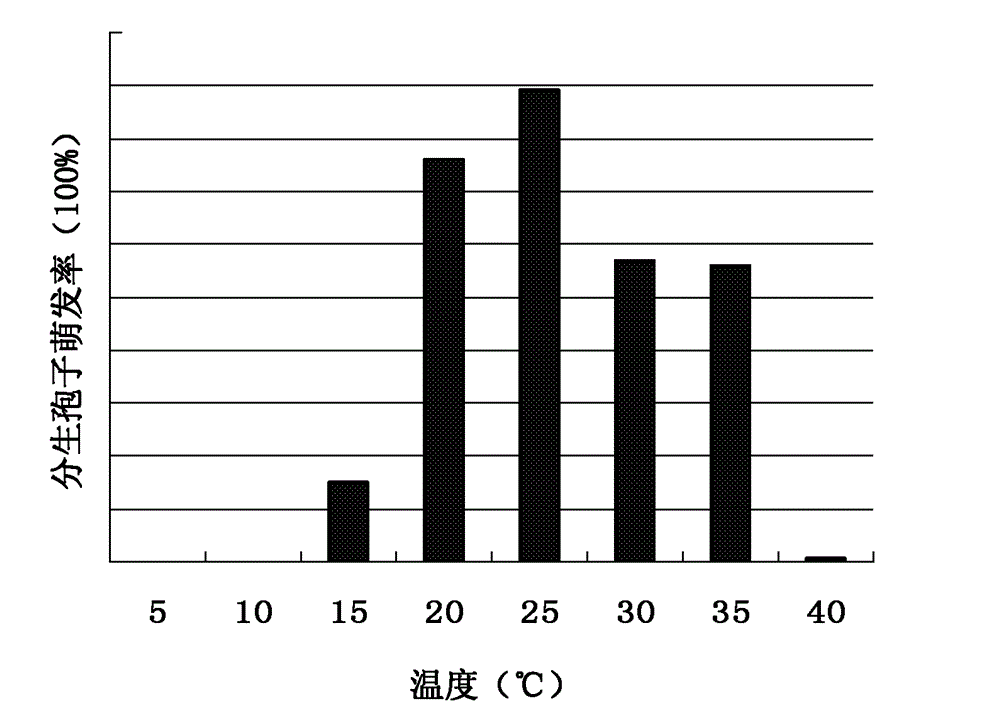Fusarium oxysporum tomato neck rot root rot specialization type and application thereof in cultivation of tomato neck rot rood rot disease-resistant varieties
A technology of Fusarium oxysporum and root rot is applied in the application field of cultivating tomato neck rot and root rot disease-resistant varieties, which can solve the problem that research on tomato neck rot root rot is still blank and other problems, and achieve the effect of promoting development.
- Summary
- Abstract
- Description
- Claims
- Application Information
AI Technical Summary
Problems solved by technology
Method used
Image
Examples
Embodiment 1
[0026] Embodiment 1, the acquisition and identification of bacterial strain
[0027] 1. Acquisition of strains
[0028] In August 2008, typical diseased plants were collected in the greenhouse of the National Vegetable Engineering Technology Research Center farm. According to the conventional method, the pathogen was isolated and cultured on a PDA plate at 25°C, and single spores were picked and purified. A strain of pathogenic bacteria was isolated and named strain Forl-c.
[0029] 2. Identification of strains
[0030] 1. Morphological identification
[0031] The strain Forl-c was inoculated on a PDA plate, cultured in the dark at 25°C, and the colony morphology was observed. Culture on CLA medium (2% water agar, 20g agar, 1L water, carnation leaf pieces), observe macroconidia, microconidia and chlamydospores, and directly observe microconidia under a 100X inverted microscope How spores are produced.
[0032] For morphological identification, see figure 1 , A is colony ...
Embodiment 2
[0038] The pathogenicity assay of embodiment 2, bacterial strain Forl-c
[0039] Tomato (Lycopersicon esculentum Mill.) inbred line Q-167: National Vegetable Engineering Technology Research Center).
[0040] 1. After culturing the bacterial strain Forl-c on a PDA plate (pH6.5) for 7 days, use distilled water to make a concentration of 10 7 per mL of spore suspension.
[0041] 2. Soak the seeds of the tomato inbred line Q-167 in warm water at 52°C for 30 minutes, and then rinse with clean water.
[0042] 3. Inoculation by root soaking method
[0043] Sow the seeds of step 2 after germination in a nutrient bowl filled with sterilized vermiculite, gently pull up the seedlings when they have 1 true leaf, rinse the root system with water, put the spore suspension obtained in step 1 (set distilled water as contrast) ) for 10 minutes, and then transplanted into a seedling pot filled with sterilized vermiculite and peat (1 mass part of vermiculite+2 mass parts of peat). The plants...
Embodiment 3
[0046] Embodiment 3, the determination of the pathogenic range of bacterial strain Forl-c
[0047] The test plants are as follows:
[0048] Tomato (Lycopersicon esculentum Mill.) inbred line Q-167: National Vegetable Engineering Technology Research Center);
[0049] Cucumber (Citrullus sativus L.) variety 102: Beijing Jingyan Yinong Science and Technology Development Center;
[0050] Beet (Beta vulgaris L.) variety purple leaf beet: Beijing Jingyan Yinong Science and Technology Development Center;
[0051] Kidney bean (Phaseolus vulgaris L.): Beijing Juhong Seedling Technology Co., Ltd.
[0052] Each test plant was carried out in the following experiments:
[0053] 1. After culturing the bacterial strain Forl-c on a PDA plate (pH6.5) for 7 days, use distilled water to make a concentration of 10 7 per mL of spore suspension.
[0054] 2. Soak the seeds of the tested plants in warm water at 52°C for 30 minutes, and then rinse them with clean water.
[0055] 3. Inoculation b...
PUM
| Property | Measurement | Unit |
|---|---|---|
| diameter | aaaaa | aaaaa |
Abstract
Description
Claims
Application Information
 Login to View More
Login to View More - R&D
- Intellectual Property
- Life Sciences
- Materials
- Tech Scout
- Unparalleled Data Quality
- Higher Quality Content
- 60% Fewer Hallucinations
Browse by: Latest US Patents, China's latest patents, Technical Efficacy Thesaurus, Application Domain, Technology Topic, Popular Technical Reports.
© 2025 PatSnap. All rights reserved.Legal|Privacy policy|Modern Slavery Act Transparency Statement|Sitemap|About US| Contact US: help@patsnap.com



